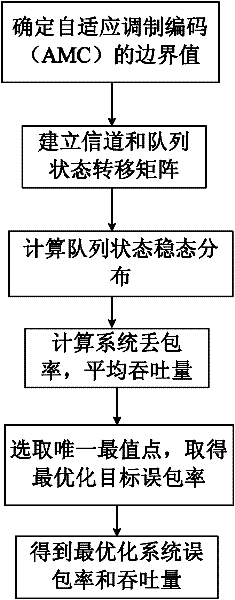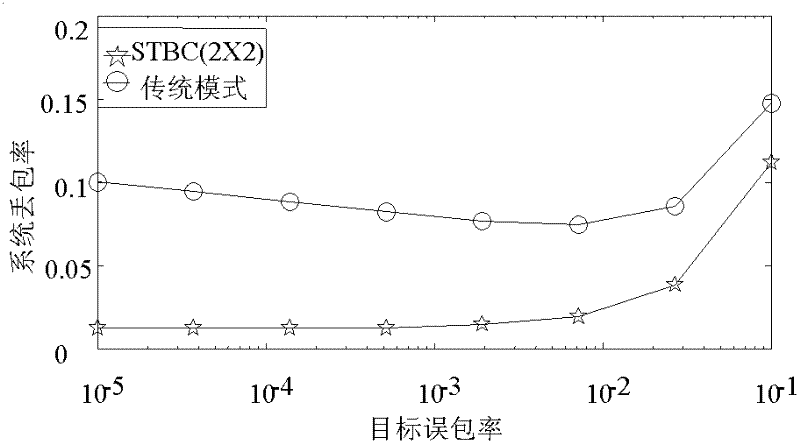Cross-layer combining method of multi-antenna system
A multi-antenna system, cross-layer technology, applied in the cross-layer joint field of multi-antenna systems, can solve problems such as inability to accurately describe system performance, and achieve the effect of locally minimizing system packet loss rate and concise modeling
- Summary
- Abstract
- Description
- Claims
- Application Information
AI Technical Summary
Problems solved by technology
Method used
Image
Examples
specific Embodiment approach
[0048] 1. Judging the parameters of the adaptive modulation mode of the multi-antenna system, and then determining the selection probability of the adaptive modulation mode
[0049] The average packet error rate P of the transmission under the adaptive modulation mode n(n∈N) can be obtained from the simulation fitting 0 And as the target packet error rate of the physical layer, so as to determine the boundary value of the mode signal-to-noise ratio
[0050] (1) Output SNR probability density function of MIMO-STBC system
[0051] Using the channel model to describe the wireless channel quality, according to the space-time block code STBC equivalent single-input single-output (SISO) system formula, the signal-to-noise ratio of the space-time block code STBC decoding output is the parameter is mD and the mean is / R c Gaussian distribution, so the probability density function of the output signal-to-noise ratio of the system is:
[0052] P rS...
PUM
 Login to View More
Login to View More Abstract
Description
Claims
Application Information
 Login to View More
Login to View More - R&D Engineer
- R&D Manager
- IP Professional
- Industry Leading Data Capabilities
- Powerful AI technology
- Patent DNA Extraction
Browse by: Latest US Patents, China's latest patents, Technical Efficacy Thesaurus, Application Domain, Technology Topic, Popular Technical Reports.
© 2024 PatSnap. All rights reserved.Legal|Privacy policy|Modern Slavery Act Transparency Statement|Sitemap|About US| Contact US: help@patsnap.com










